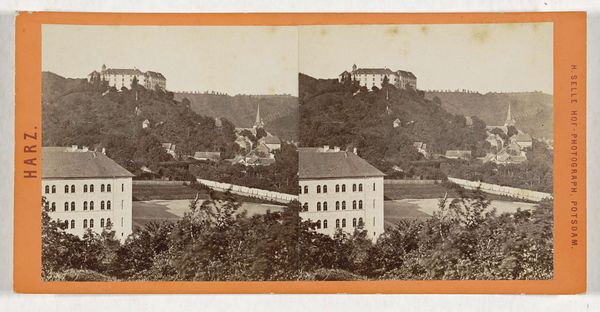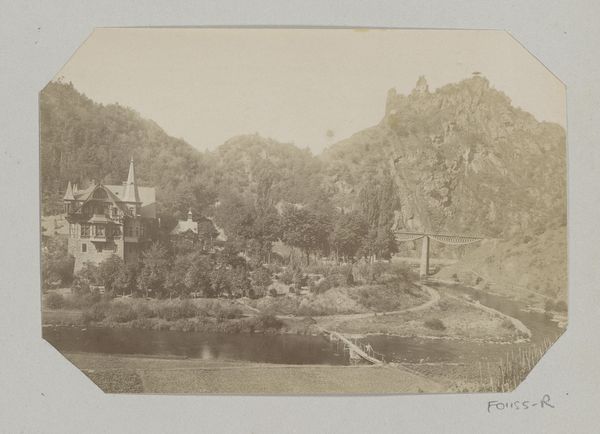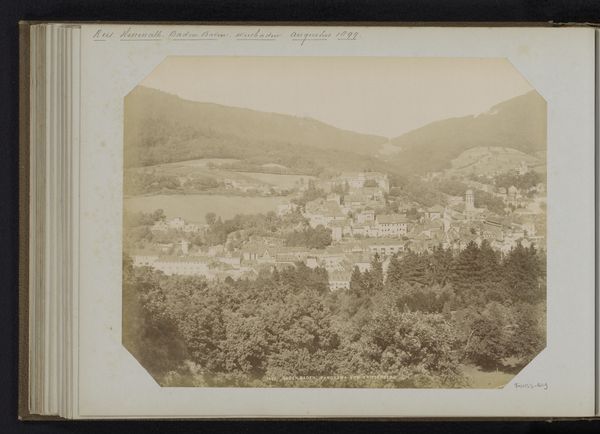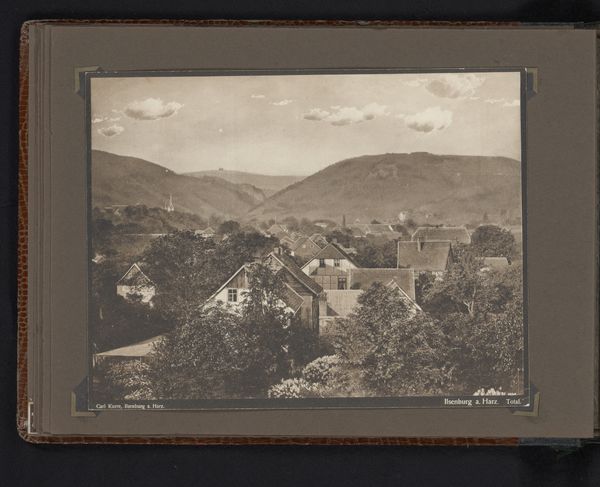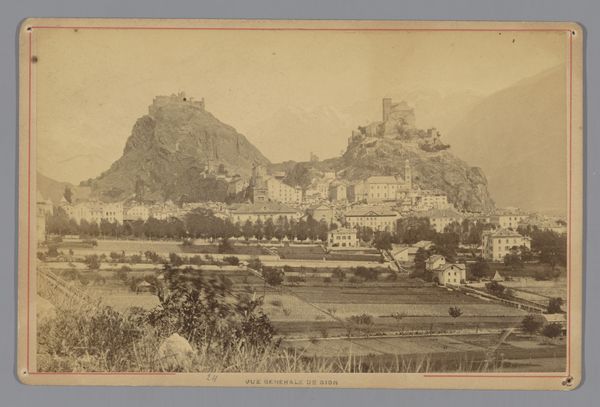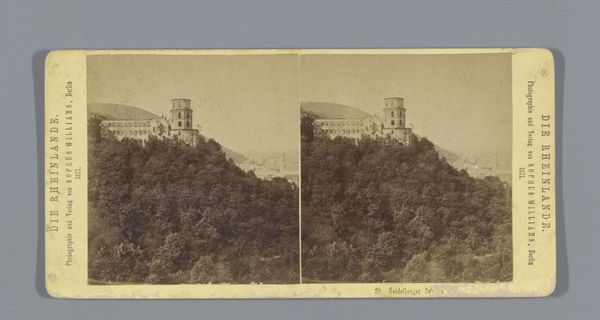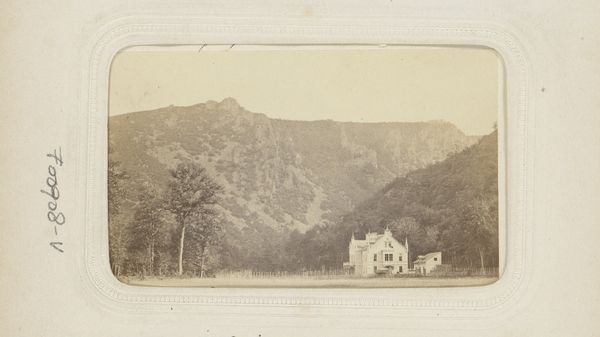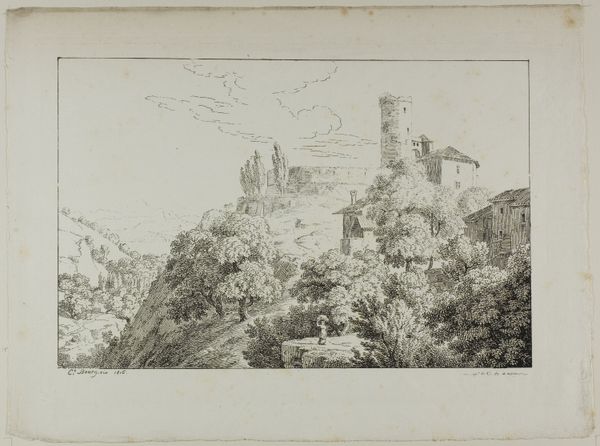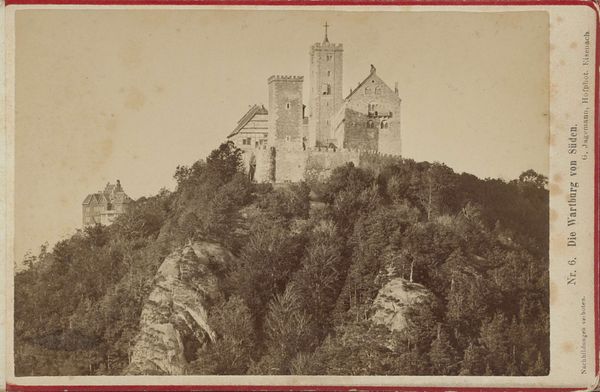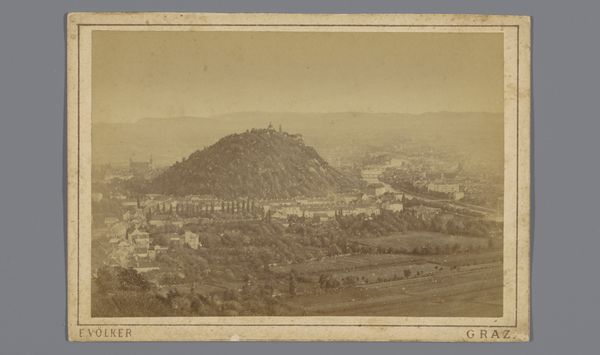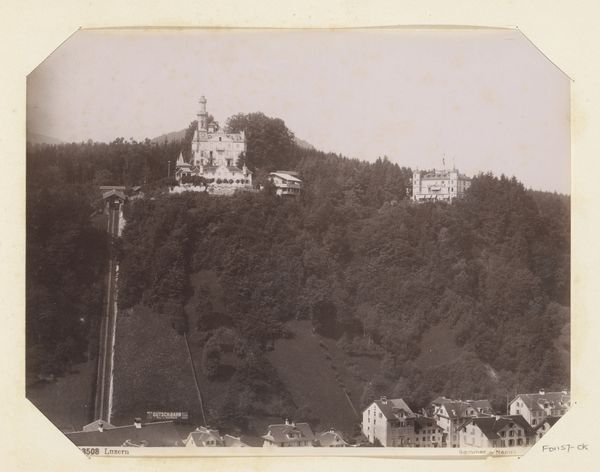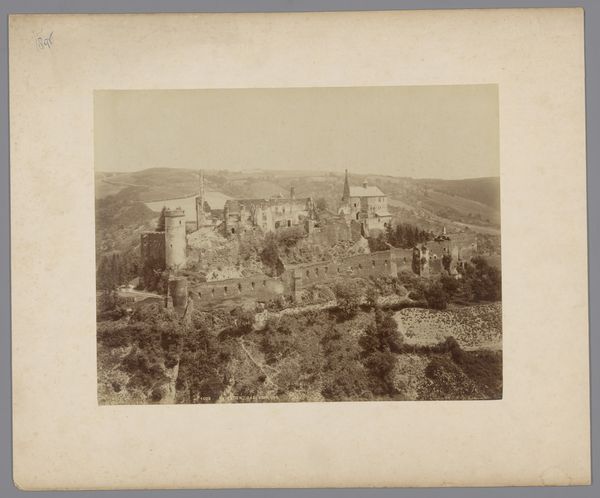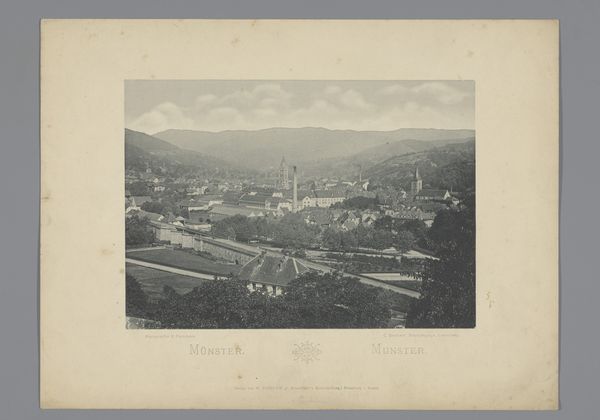
Dimensions: height 61 mm, width 105 mm
Copyright: Rijks Museum: Open Domain
Editor: Here we have L. Meder's "View of Heidelberg Castle, Germany," created sometime between 1860 and 1875, an albumen print. It's very sepia-toned, and has an almost painterly quality, but in its materiality it seems clearly tied to photography. What jumps out to you about this piece? Curator: I'm immediately drawn to the albumen print itself. Think about the materials and labor involved: egg whites, silver salts, the photographic process transforming light into image. Photography, in this era, challenged traditional painting; it democratized image making. Instead of artisanal painting requiring intense training, this photographic technology became accessible. Editor: That's interesting. I hadn't thought about the labor involved in producing the print itself. Does the choice of Heidelberg Castle have significance in this context? Curator: Absolutely. Castles evoke romantic notions of history, power, and artistry but it’s equally critical to examine the process. How this scene is captured photographically becomes relevant. Its reproducibility due to industrialization transforms our relationship to the site and the image. What shifts do you recognize? Editor: The potential for mass distribution certainly changes the consumption of such imagery; making iconic sites more easily available and influencing how many people "see" such sites for the first time. Curator: Exactly! The material production enables distribution, commodifying culture in a novel way and reshaping consumption habits. Consider plein-air photography; think of lugging heavy equipment into nature. It's about the physicality of creation under specific social constraints that allows its presence in time and the material and immaterial value produced within it. Editor: So it’s about viewing this image not just as a representation of Heidelberg Castle, but also understanding the societal conditions and industrial methods that allowed it to be made and distributed. Curator: Precisely! By focusing on those dynamics, we uncover more than just the pretty picture, we uncover complex historical, social, and economic ties through the physical art.
Comments
No comments
Be the first to comment and join the conversation on the ultimate creative platform.
